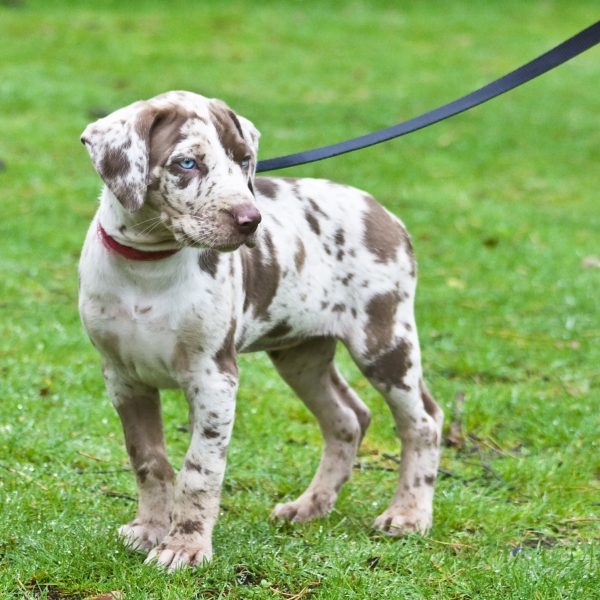4 Tips for Leash Training Your Puppy

When you add a puppy to your family, you’re also adding a lot of walks to your future. It’s important to start leash training your puppy early to get them used to it and to ensure they’ll be a good walking partner as they grow. Here are a few tips for leash training your puppy:
1. Introduce a Collar or Harness and Leash Early
Unfamiliarity and lack of leash training can be reasons why dogs refuse to walk sometimes. Counteract this by introducing your puppy to the experience of wearing a collar or harness and leash early. You want to make sure they get used to wearing them, especially during playtime or when you are giving them treats. This ensures a positive experience with these items and makes the association between a collar, harness, and leash and fun times and treats.
2. Use Cues
Teaching your puppy to follow cues is a valuable training tool and can help improve your dog’s recall training. First, make the association between the cue and treats. A clicker can be a useful tool for this, but you can also use a word, snap your fingers, or cluck your tongue.
Pick a distraction-free area inside with the puppy wearing the collar or harness and leash. Make the cue and reward your puppy with a treat the second they look toward you or turn toward you. Once the association is made, your puppy will start coming over to you for a treat when you make the cue.
This is when you can start backing up a few paces and rewarding them for continuing to come towards you. When they have gotten pretty good at this indoors, you can start taking short leashed walks outside to continue building skills.
3. Be Patient and Consistent
Puppies have short attention spans, so you want to remember to be patient and consistent during these training and walking sessions. Also, keep them short. Cut off training sessions when your puppy is still focused on them instead of waiting for them to get bored first. You want to keep the training sessions as positive as possible. Walks are supposed to be fun, so you want to keep any potential associations with them good.
As you take these walking sessions outside, keep the walks short initially and stay proactive. If your puppy seems like they are about to lunge or get distracted, use the cue, move away, and reward your puppy for coming to you. The key is to redirect their attention before they actually lunge or get completely distracted.
4. Stop Pulling in its Tracks
The perfect time to stop your dog from pulling on the leash is during these leash training sessions when they are a puppy. You can train an older dog to stop pulling on a leash, but it will take more time to do so. It’s easier to train a puppy into desired behavior and avoid undesired behavior than it is to train a dog out of an established habit.
If your puppy begins to tug or pull on the leash, stop moving and stand still. Avoid yanking or jerking on the leash or attempting to drag your puppy along with you. Just stand still and don’t move until your dog comes back to you; pretend you are a tree or a light pole if you have to. Only begin moving again once your puppy has come back to you and there is slack in the leash. If they start to pull again, repeat the process. It can take some time, but your puppy will start to realize they’ll have a lot more fun on walks if they don’t pull on the leash.
Leash training is essential for you and your dog, and it is also important to help prepare your dog for a dog walker in case you ever need to use one. Leash training can be a lifelong process for you and your dog, but starting it as a puppy can make daily walks a lot easier. With these tips for leash training your puppy and some general dog walking tips, you’re ready to jump in and get started.
